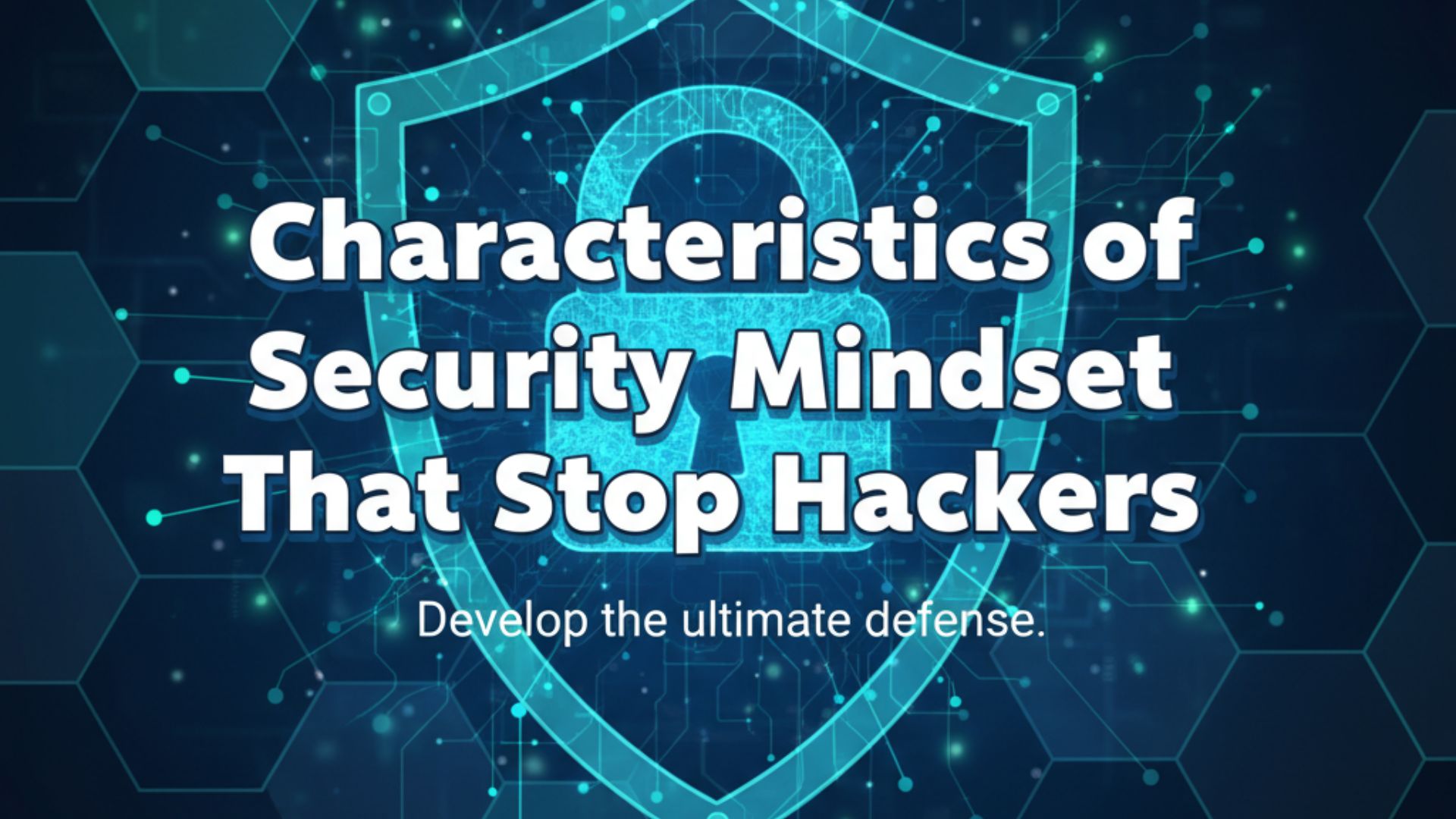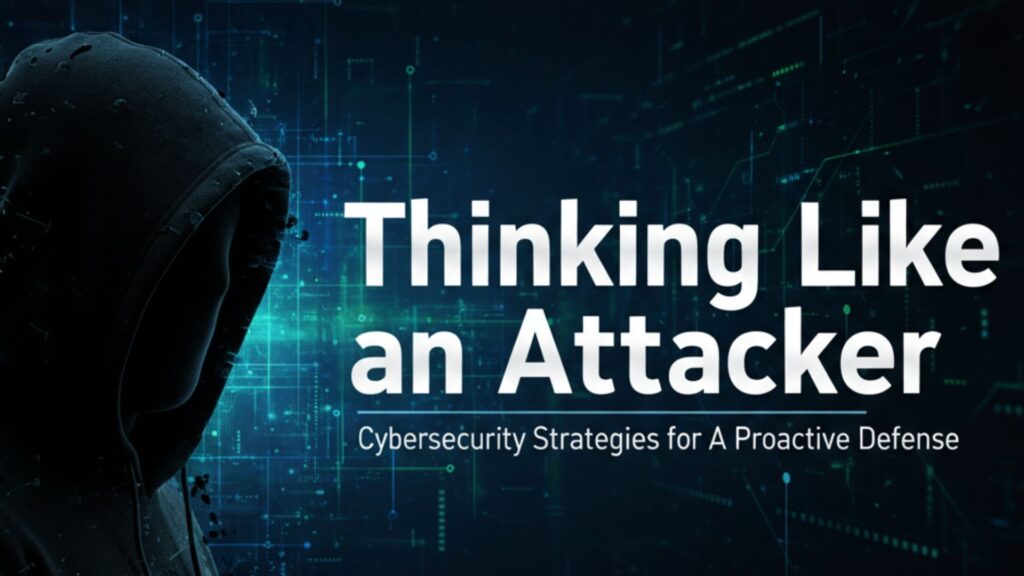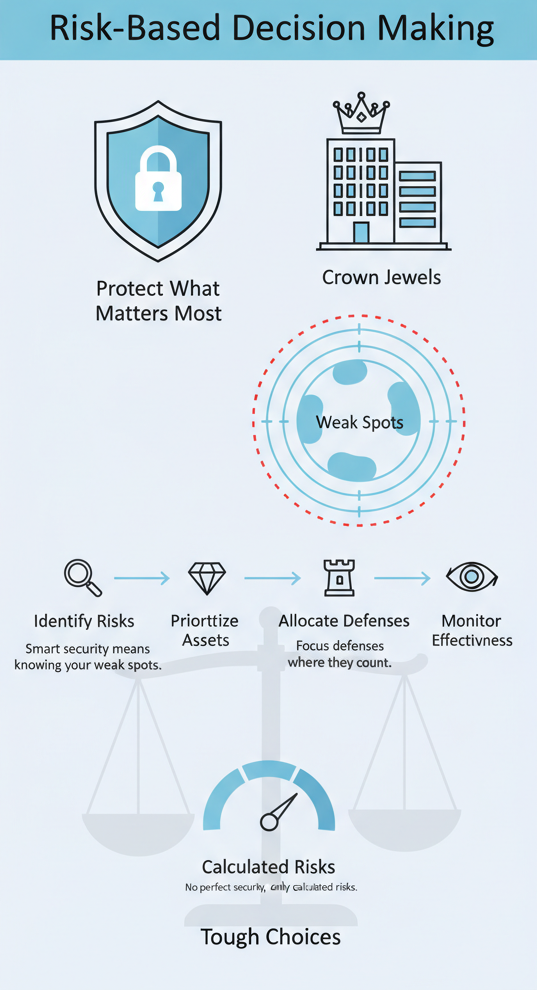
We look at things differently in security. A security mindset gets under your skin, it’s not something you check off a list and move on. Think about how you lock your front door without thinking twice. That’s what we’re talking about here.
Security pros don’t just see a login page, they see every way someone might try to break it. They wake up wondering what could go wrong, not what’s working right. It’s like having a built-in radar for trouble spots that most people walk right past.
Our students learn to question everything, from innocent-looking input fields to seemingly harmless file uploads. Because that’s what it takes to build secure systems that last. Want to know how deep this rabbit hole goes? Keep reading.
Key Takeaway
- Looking through an attacker’s eyes makes security more than just theory.
- Smart teams question everything – even stuff that looks safe.
- The best security pros never stop learning because threats never stop changing.
Core Focus: Proactive Threat Identification
Walking into a system without checking for holes is like leaving your house with the windows open. Our security trainers learned this lesson years ago, and now it’s practically tattooed on their brains. You can’t just sit around waiting for alarms to go off.
The pros we work with don’t need reminders to check their environments – they do it naturally, like checking their rearview mirror while driving. When our students finish training, they’ve picked up this sixth sense too.
Here’s what sticks:
- Check your systems even when everything looks fine
- Hunt down weak spots before the bad guys do
- Trust your gut when something feels off
After 15 years of teaching security, we’ve seen how this mindset becomes second nature. The more you practice it, the more those potential threats jump out at you. Like muscle memory, but for your brain.
Thinking Like an Attacker

Getting inside a hacker’s head isn’t as sketchy as it sounds. Our security team spends hours adopting an attacker security mindset, and it’s completely changed how we see everything. Last week, one of our students spotted a blind SQL injection that slipped past three different audits – all because she asked herself, “What if I tried breaking this input validation?”
The tricks hackers use leave breadcrumbs everywhere, you just need to know what to look for. Some days it feels like playing chess, except your opponent’s hiding in the dark. That’s why we drill our students on common attack patterns until they can spot them in their sleep.
Things we watch for:
- Unusual login attempts during off-hours
- Weird file names that don’t match their contents
- Database queries that take too long
- Traffic patterns that don’t make sense
The more time you spend thinking like an attacker, the more these signs jump out at you. It’s like developing a sixth sense – one that makes the difference between catching an attack early or dealing with a full-blown breach.
Questioning Assumptions
Nothing kills security faster than thinking “that’s probably fine.” Every system has weak spots, and pretending they don’t exist won’t make them go away. Our trainers learned this lesson the hard way, watching seemingly bulletproof systems fall apart because nobody asked the right questions.
Security isn’t some set-it-and-forget-it thing. What worked last year might be swiss cheese today. That’s why we push our students to dig deeper, ask tougher questions, and never take “it’s always been this way” for an answer.
You’d be amazed how many breaches started with someone assuming everything was okay. Or maybe you wouldn’t – if you’ve been in this field long enough, you’ve probably seen it yourself.[1]
Risk-Based Decision Making

Sometimes the biggest risks hide in plain sight. That fancy new security tool might look great on paper, but if it doesn’t protect what matters most, it’s just expensive window dressing. We’ve seen companies drop millions on flashy security tech while leaving their crown jewels exposed.
Making smart security choices means knowing where your weak spots are – and being honest about them. It’s about figuring out what you can’t afford to lose, then working backward from there.
Key focus areas:
- Map out what needs protecting most
- Figure out what could actually go wrong
- Put defenses where they’ll do the most good
- Keep checking if those defenses still work
There’s no perfect security – just calculated risks and tough choices. The trick is making those choices count where it matters most. After teaching thousands of developers, we’ve learned that the best security decisions come from understanding not just the threats, but the business behind them.
Motivation, Learning, and Adaptation
Paranoia keeps security folks sharp, but it’s curiosity that keeps them going. After ten years of teaching secure coding, we’ve watched hundreds of developers transform from code-focused builders into security-obsessed guardians, which proves the importance of security mindset in coding if you want long-term resilience.
It’s like they can’t help themselves – once they start seeing the holes, they can’t unsee them. Every month brings new attacks, and yesterday’s patches might not cut it tomorrow. Our most successful students are the ones who treat security like a never-ending puzzle, not a checklist to complete and forget.
They’re the ones reading bug reports at 3 AM, not because they have to, but because they need to know how someone pulled off that latest hack.
What works in security:
- Following hacker forums (legally, of course)
- Breaking down recent breaches
- Testing new attack tools in labs
- Sharing war stories with peers
The best security pros don’t just bounce back from attacks – they come back knowing exactly how to stop the next one. It’s this mix of stubborn persistence and endless curiosity that turns good defenders into great ones.
Technical and Analytical Skills
Credit: Mark Ericksen
Nobody catches everything on the first pass. Real security work means going deep – sometimes spending hours tracking down one weird log entry that doesn’t look quite right. Our training labs throw curveballs at students because that’s exactly what happens in the real world.
The devil’s in the details, and sometimes those details are buried in thousands of lines of code or hidden behind seemingly normal system behavior.[2] Last month, one of our students found a critical vulnerability just because the response time was 50 milliseconds longer than usual.
When investigating potential threats, you’ve got to:
- Document everything, even stuff that seems minor
- Test assumptions repeatedly
- Connect dots across different systems
- Trust your gut when something feels off
Experience has taught us that thoroughness beats speed every time. Rush through an investigation, and you’ll miss the subtle signs that often point to bigger problems.
Cultural and Organizational Influence

Security isn’t a one-person show. We’ve watched companies throw money at tools and training, only to fail because their culture treated security like someone else’s problem.
The strongest defense comes when everyone, from the intern to the CEO, feels responsible for keeping things safe, and that means actively cultivating a security mindset across the whole organization.
Creating this mindset takes time. Our most successful partners are the ones who’ve made security part of their DNA. They don’t just run training sessions; they build security checks into every process, every meeting, every decision.
Key culture builders:
- Regular threat-sharing sessions
- Rewarding security catches, not punishing mistakes
- Building security reviews into development
- Making it easy to report concerns
Teams that get this right don’t just prevent breaches – they create an environment where good security happens naturally. Like muscle memory for an entire organization, it becomes part of who they are, not just what they do.
Balancing Vigilance and Pragmatism
Being too careful in security can backfire just as badly as not being careful enough. Last quarter, one of our enterprise clients got so paranoid about security that they locked down their development environment so tight, their devs couldn’t even run basic tests. Productivity dropped 60% before someone finally spoke up.
Security isn’t about saying no to everything. Sure, we’ve seen some pretty scary attacks in our time teaching secure development, but that doesn’t mean every new feature is a disaster waiting to happen. The trick is knowing when to dig in your heels and when to work with what you’ve got.
Smart security means:
- Knowing which risks actually matter
- Finding ways to say “yes, if” instead of just “no”
- Building guardrails, not walls
- Measuring security impact against business needs
You can’t protect everything perfectly – and trying to will just drive everyone crazy. Our most successful graduates learn to spot the difference between real threats and theoretical ones. They know when to push back hard and when to find creative solutions that keep both security and business running smooth.
Sometimes good enough really is good enough. The goal isn’t perfect security (that doesn’t exist), but rather security that works in the real world, where deadlines exist and budgets aren’t infinite.
Wrapping Up the Characteristics of Security Mindset
Security experts know it’s not about fancy gadgets or complex rules. It’s about staying alert and thinking ahead (just like chess players who anticipate their opponent’s next five moves). Being curious, checking things twice, and always questioning what’s in front of you, that’s the real deal. And sure, sometimes people get too careful and slow things down, but better safe than sorry. The key is finding that sweet spot between protection and progress. Join our Bootcamp to sharpen your security mindset.
FAQ
What does it mean to have a security mindset or cybersecurity mindset in daily work?
A security mindset or cybersecurity mindset is about more than just knowing rules. It means staying alert, asking “what could go wrong,” and looking at systems with curiosity. People with this kind of secure thinking pattern tend to notice small details that others miss. They practice security awareness every day, from spotting strange emails to questioning weak passwords. This isn’t about fear, it’s about building habits that keep risks low. Both individual security mindset and organizational security mindset grow stronger when people take responsibility for protecting data, systems, and people.
How does a security-first mindset help with threat anticipation and incident prevention?
A security-first mindset means you think about safety before you act. This way of thinking encourages threat anticipation and incident prevention instead of reacting after something bad happens. It often includes evaluating vulnerabilities, spotting gaps, and running a security risk assessment before making big changes. People with this approach see security as part of their job, not as extra work. Over time, this habit builds security resilience and security adaptability, so teams bounce back faster when problems show up. It turns awareness into action and helps prevent mistakes that might open the door to attacks.
Why is thinking like an attacker or using adversarial thinking useful for security flaw detection?
Thinking like an attacker is one of the most useful tools for security flaw detection. Adversarial thinking asks you to imagine how someone might try to break rules, trick systems, or misuse access. This mindset is close to an ethical hacking mindset, where the goal is to test defenses before real criminals do. When people practice vulnerability analysis or security evaluation, they often uncover weak spots early. It’s not about being negative, it’s about being realistic. The hacker mindset helps teams run stronger security investigations and focus on breach prevention in everyday operations.
How do cybersecurity habits and security culture connect with security accountability?
Cybersecurity habits don’t grow overnight. They develop inside a strong security culture where people feel security responsibility is shared, not ignored. Simple daily practices, like using good passwords or reporting odd emails, become second nature when security education and security training are ongoing. Security accountability means everyone, not just leaders, owns their role in keeping systems safe. This creates a security collaborative culture where people learn from each other. Over time, shared security behavior leads to continuous security improvement, because small changes and better habits add up, making both individuals and organizations safer.
What role do security curiosity and security skepticism play in security mindset development?
Security curiosity is what drives someone to ask questions like, “Is this safe?” or “What if someone tried this?” Security skepticism helps people avoid blindly trusting systems or messages that could be traps. Together, they support security mindset development by pushing people to explore and test assumptions. This is part of the broader security thinking process, where both security intuition and the security cognitive process guide decisions. With more security knowledge, security experience, and even a touch of security paranoia, people sharpen their security expertise. These traits improve security problem solving and keep defenses active.
References
- https://en.wikipedia.org/wiki/Heartbleed
- https://www.sciencedirect.com/science/article/abs/pii/S0167404821003321

